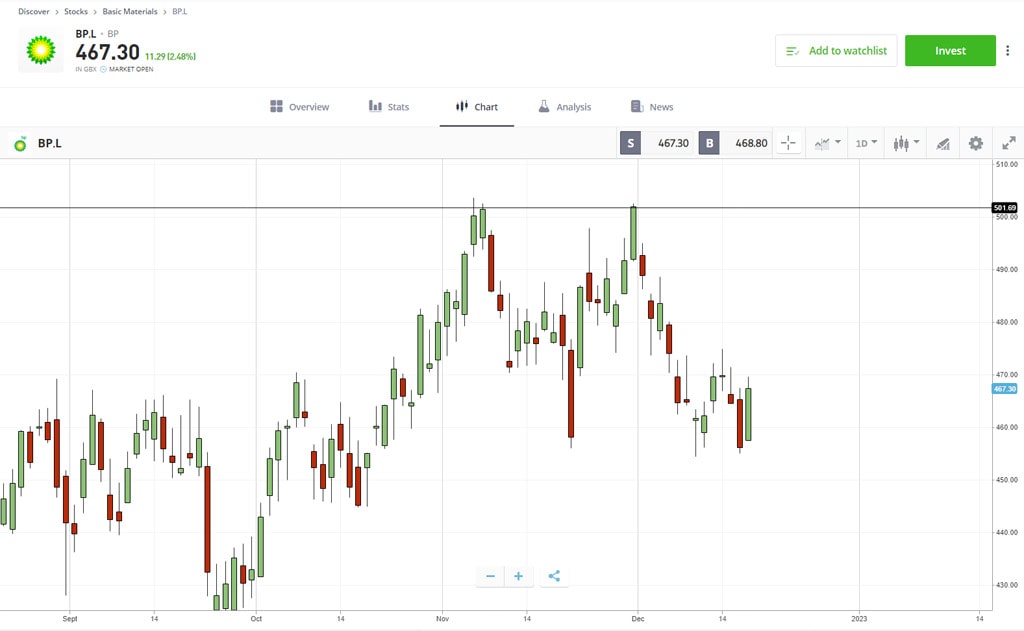Want to learn more about different order types and how they might suit certain scenarios? Read all about this and the decision processes behind choosing an order level below.
Orders are a core part of trading and this article aims to give you a better understanding of the different orders that are available. We’ll begin by revising the basic order types, before moving on to less obvious aspects of using orders to trade.
Revision of order types
If you have trading experience, you are most likely familiar with the common types of orders. Let’s quickly revise the terminology as a starting point.
Any instruction to trade is an order and the most common order used by CFD traders is simply to deal at the current price. If you click “BUY” or “SELL” on a price, it is effectively what’s known as a market order — an instruction to deal at whatever price is currently available.
A trader might use a market order when the priority is to establish a position as soon as possible and when they are less concerned about achieving a specific level for their trade.
But what about when the trader is interested in dealing only under certain price conditions?
This is where a trader might use a stop or limit order. A stop can be thought of as an instruction to deal at a worse price than is currently available (in other words, buying at a higher level or selling at a lower level). A limit can be thought of as an instruction to deal at a better price than is currently available (in other words, buying lower or selling higher).
A stop is commonly used to cut a position if the market moves against you (often called a stop-loss in this instance). A limit is commonly used to set a price target to take profit on a trade.
Limits and stops can also be used to open positions which we will look at later on in this article.

Why use a limit or stop?
Stop and limit orders are useful for executing your trading instructions automatically, so that you do not constantly have to monitor price levels.
Orders can also be useful as a way of enforcing some form of trading discipline on yourself. For example, if you set a stop to exit a trade at a level which you have decided would indicate your trade has gone wrong, then it can help as a tool for cutting losses.
Having a stop and limit in place on an open position can also encourage you to explicitly quantify how your risk measures up against the potential profit for which you are aiming.
Tip: Stops and limits can encourage you to examine the balance of risk versus reward.

Stops and slippage
One thing to be aware of when using a stop, is the possibility of price slippage between order level and fill level. Because a stop becomes an instruction to deal at market (i.e., the currently available price) if its level is touched, there is a risk of slippage, particularly in a fast-moving market. A limit order, by contrast, can never be filled any worse than your specified level.
Tip: If you are worried about slippage, it is worth paying attention to the liquidity of the instrument you are trading. With a liquid, well-traded stock in normal market conditions, you are far less likely to get slippage than with an illiquid stock, for example.
Picking a stop level
When you place a stop-loss on an existing position, there are three variables to consider: transaction size, stop distance and the risk implied by your stop. All three are related: if you fix two of them, you define the third. This, therefore, gives a trader three choices:
- Choose a stop level, choose a risk and define the number of units
- Choose a stop level, choose the number of units and define the risk
- Choose the number of units, choose a risk and define the stop level
NB. When we talk here about “risk,” it is with an assumption that the stop is filled at its level. Because of the possibility of slippage, it does not mean an absolute constraint on how much you are risking.
For example, if you buy 150 shares of Intel at a price of $29.50 and put a stop two dollars away at $27.50, you have chosen your stop level and your number of units, which defines your risk. In this case, the stop distance is two dollars, the number of units is 150, and the risk is, therefore, $2 x 150 = $300.
The third item on the list above makes the stop a function of other choices rather than a direct choice. Since a stop level may define where you exit a trade, it’s worth giving more thought to its placement rather than simply setting it as a by-product of other factors.
The prevailing volatility of the market may also be something to consider as a potential guide for adjusting how close or far away you place a stop. Ask yourself: if the market has been exhibiting a lot of volatility, do you want a wider stop or a closer stop?

Trailing stops
There is also a specialised form of stop order available called a trailing stop. As the name suggests, these are stop orders that trail behind the current market price.
You choose how far away from the market price you want to maintain the stop and, as the market moves in your favour, your stop will move with it, hence, trailing the price. This offers a way of keeping a lid on your risk, while maintaining your market exposure and, hence, gives you the potential of running your profits if the market continues to trend in your favour.
Let’s now discuss using stops and limits to open new positions.
Using limits to improve your entry point
If we look at how markets move, whether the overall direction is up, down or sideways, the price frequently fluctuates, which is to say, rather than uniformly proceeding, it will often go up and down as it makes its way to wherever it is heading.
One use of limits is to try and harness short-term fluctuations or pullbacks to improve the level at which you enter the market. The risk of employing this approach is that your limit order may not get filled and you might miss out on a move.
A more specific version of this is attempting to finesse the market spread, which you might find an appropriate strategy in a static or quiet market, especially if the bid/offer is wide.
For example, consider a trader looking to sell Diageo when the bid/offer spread is 3665/3677 on a day when the share price has moved very little. Rather than choosing to sell at the bid price, the trader could place a limit at 3677.
If their limit order is filled, they avoid paying the market spread. Of course, if the market drops immediately without their order being filled, they now face having to sell at a worse price or simply accepting they have missed their opportunity.
Using limits to try and catch turning points
Another way some traders use limits is to try and enter the market when it is changing direction, hoping to sell at highs or buy at lows. This is a contrarian approach, hoping to successfully pick inversion points in the market. This is in contrast with using a stop to enter a market, where a trader may seek to buy into highs and sell into lows.
This latter case may seem less intuitive, so let’s illustrate it by discussing a hypothetical case of placing a limit and a stop. As we said earlier, where to place an order is a trading decision, and, therefore, an expression of how an individual trader judges the probability of how a market might behave.
One way of informing that judgment is to look at past data. While there is no guarantee that the market will perform in the future in the same way as it did in the past, historical data is readily available, pertinent and used by many market participants. One of the easiest ways to see a lot of price data at once is to look at a chart.
As an example, let’s look at a chart of BP plc.

For illustration purposes only. Past performance is not an indication of future results.
Source: eToro
We can see that the price rebounded twice, about a month apart, just above 500p. One approach might be to place a limit to sell around this level in the hope that the previous behavior will continue.
A different approach might be to place a stop somewhere above 500p, hoping that if the market breaks through where it previously rebounded, it will keep on moving upward. These are two basically opposite tactics, and we will discuss this in greater detail in our next article about trending and countertrending approaches to trading.
Conclusion
Stop and limit orders are useful and convenient tools for trading. They can be used to close existing positions or to open new ones. They not only allow you the convenience of automatically executing a trade should a target price occur, but they can encourage a trader to clarify their trading plans.
This is the second in a five-part educational course about trading skills. The next part of the series is about Analysing the Market and Choosing a Trading Approach.
Quiz
FAQs
- If I place a stop on a position, can I be stopped out at a level worse than my stop?
-
Yes. If a stop is triggered, you will trade at the best available price in the market. This may be worse than your stop level, especially in a fast moving market.
- If I place a limit on a position, can my limit be filled any worse than the level I specify?
-
No. A limit will never be filled at a worse price than your level.
- Can I use a limit order to open a new position?
-
Yes. As well as a means of closing existing positions, both limits and stops can be used to open new positions.
This information is for educational purposes only and should not be taken as investment advice, personal recommendation, or an offer of, or solicitation to, buy or sell any financial instruments.
This material has been prepared without regard to any particular investment objectives or financial situation and has not been prepared in accordance with the legal and regulatory requirements to promote independent research. Not all of the financial instruments and services referred to are offered by eToro and any references to past performance of a financial instrument, index, or a packaged investment product are not, and should not be taken as, a reliable indicator of future results.
eToro makes no representation and assumes no liability as to the accuracy or completeness of the content of this guide. Make sure you understand the risks involved in trading before committing any capital. Never risk more than you are prepared to lose.


